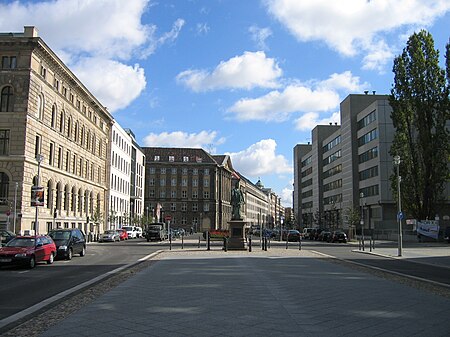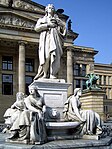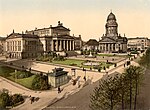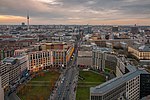Mohrenstraße

Mohrenstraße is a street in central Berlin. It runs from west to east between Wilhelmstraße and Hausvogteiplatz, and partially forming the southern edge of Gendarmenmarkt. The Berlin U-Bahn station Mohrenstraße is located at its western end, and is served by the . A number of buildings in the street date to the mid-19th century (Gründerzeit) or were reconstructed after World War II, and are protected historic buildings. In August 2020, in the context of broader re-examinations of European colonial history spurred by the George Floyd protests, the borough assembly of Berlin-Mitte suggested that the borough authority rename the street Anton-Wilhelm-Amo-Straße, honoring Anton Wilhelm Amo, the first African to receive a doctorate from a German university.
Excerpt from the Wikipedia article Mohrenstraße (License: CC BY-SA 3.0, Authors, Images).Mohrenstraße
Charlottenstraße, Berlin Mitte
Geographical coordinates (GPS) Address Nearby Places Show on map
Geographical coordinates (GPS)
| Latitude | Longitude |
|---|---|
| N 52.512279 ° | E 13.392168 ° |
Address
Gendarmenmarkt
Charlottenstraße
10117 Berlin, Mitte
Germany
Open on Google Maps









